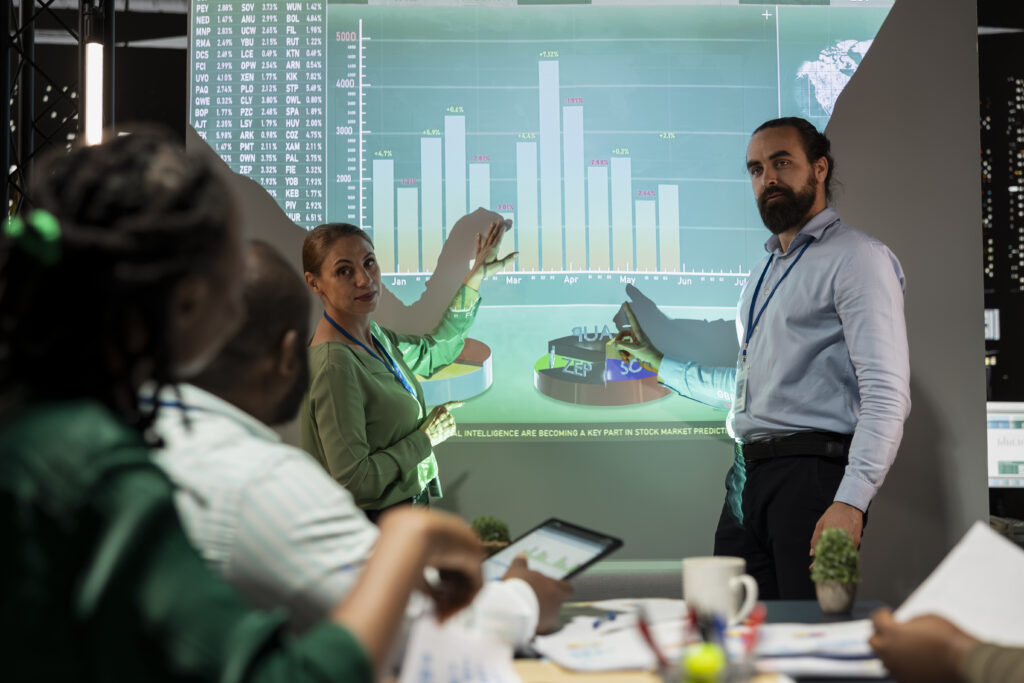The Middle East is at a unique inflection point. As nations across the GCC (Gulf Cooperation Council) aggressively pursue economic diversification and digital transformation pumping trillions into smart cities, AI, and cloud infrastructure, the demand for data processing capacity is soaring. Data centers, the physical engine rooms of the digital economy, are proliferating at an unprecedented rate. However, this growth is set against a critical backdrop: the urgent global need for sustainability and the region’s inherent environmental challenges, particularly extreme heat and water scarcity.
The future of digital infrastructure in the Middle East, therefore, rests on the ability of its developers to shift from traditional, power-hungry models to Green Data Centers. This transition is not just an environmental choice; it is a strategic imperative that ensures long-term economic resilience, competitive advantage, and adherence to national net-zero goals.
The Sustainability Imperative in the Middle East
The challenges in the Gulf region amplify the need for energy efficiency. Data centers require massive amounts of electricity, primarily for running the IT equipment and, crucially, for the cooling systems necessary to combat ambient temperatures that can exceed 50∘C in summer.
- Energy Consumption: Traditional data centers have high Power Usage Effectiveness (PUE) ratios, meaning a large portion of energy is wasted on overhead, mostly cooling.
- Water Scarcity: Many cooling methods, particularly evaporative cooling, consume vast quantities of water, placing a significant strain on the region’s already stressed water resources.
- National Visions: Countries like the UAE (Net Zero 2050) and Saudi Arabia (Green Initiative) have enshrined sustainability into their national visions. Digital infrastructure must align with these mandates.
This reality has spurred innovation, making the Middle East a potential global leader in pioneering ultra-efficient, desert-resilient data center technology.
Key Pillars of the Green Data Center Future
The transition to truly green data centers in the Middle East is being built upon three main technological and design pillars: Renewable Energy Integration, Advanced Cooling Strategies, and Circular Economy Principles.
1. Renewable Energy Integration (Powering the Mission)
While traditional data centers rely heavily on grid power (often generated from natural gas or oil), the new generation is directly leveraging the region’s most abundant resource: solar energy.
- Corporate Power Purchase Agreements (PPAs): Data center operators are signing long-term PPAs with utility-scale solar farms to ensure their facilities are powered by certified clean energy, often targeting 100% renewable energy usage.
- On-Site Generation: Integrating solar photovoltaic (PV) panels directly onto the data center campus (roofs, parking lots, adjacent land) provides a direct, localized clean power source.
- Energy Storage: Given the intermittent nature of solar power, large-scale battery energy storage systems (BESS) are essential to maintain seamless operation and provide a buffer during peak demand or grid fluctuations, furthering resilience.
2. Advanced Cooling Strategies (Fighting the Heat Efficiently)
The most significant battle is against heat. Innovative cooling solutions are drastically reducing both energy and water consumption.
- Air-Side Economization (Limited Use): While challenging due to high temperatures and dust, certain regions or specific operating periods can utilize “free cooling” when ambient air temperatures drop at night or in cooler months. This requires sophisticated filtration.
- Indirect Evaporative Cooling (IEC): This method uses the cooling effect of water evaporation without introducing moist air into the data halls. It is significantly more water-efficient than direct evaporative methods and is a crucial part of the green strategy.
- Liquid Immersion Cooling (LIC): This emerging technology is highly disruptive. Servers are submerged in a non-conductive, recyclable liquid that is far more effective at absorbing heat than air. LIC can dramatically reduce cooling energy consumption (by up to 90%), eliminate the need for vast quantities of water, and allow servers to be packed more densely, shrinking the facility’s overall footprint. The Middle East, with its heat challenge, is a perfect incubator for LIC adoption.
- Adiabatic Cooling: Utilizing water evaporation to pre-cool the air before it reaches the heat exchangers, significantly reducing the mechanical cooling load during peak heat, without consuming excessive water like open-loop systems.
3. Circular Economy Principles and Design for Efficiency
Green data centers are designed from the ground up to minimize waste, maximize resource use, and simplify operations.
- Optimizing PUE: The primary metric for energy efficiency, PUE, is being targeted for near-ideal scores of 1.1 to 1.2. This means that for every 1.1 or 1.2 units of energy consumed, 1 unit is used for IT equipment, with minimal waste.
- Sustainable Building Materials: Using locally sourced, low-carbon, or recycled construction materials reduces the embodied carbon footprint of the facility itself.
- Waste Heat Recovery: Exploring systems to capture waste heat generated by the servers and repurpose it for other uses, such as heating adjacent office buildings, heating water, or even powering desalination plants, thereby creating a symbiotic energy ecosystem.
- IT Asset Management: Implementing strategies for the full lifecycle management of IT equipment, including certified refurbishment, recycling, and responsible disposal of electronic waste (e-waste).
The Policy and Economic Drivers
The shift to green data centers is being accelerated by clear governmental and economic drivers:
- Regulatory Pressure: Governments are increasingly linking operating licenses and development approvals for data centers to achieving specific PUE targets and using renewable energy sources.
- Investor Demand: Global institutional investors and hyperscale cloud providers (like Amazon, Microsoft, and Google), which are key clients, have their own aggressive net-zero commitments. They prioritize co-locating their infrastructure in facilities that meet stringent environmental, social, and governance (ESG) standards.
- Cost Savings: Over the long term, renewable energy is cheaper and more stable than fossil fuel-based power. Highly efficient cooling systems, like LIC, slash operational expenditure (OPEX) dramatically, making the green option the more financially prudent option in the harsh Middle Eastern environment.
Conclusion: A Sustainable Digital Horizon
The Middle East’s journey toward digital dominance is inextricably linked to its commitment to sustainability. The next generation of data centers in the region cannot afford to be energy and water gluttons; they must be models of efficiency and resilience. By embracing advanced technologies like liquid immersion cooling, integrating massive solar power arrays, and designing for low PUE, the Gulf states are not just meeting regulatory demands but establishing a new standard for sustainable digital infrastructure globally. This commitment ensures that the region’s digital ambition is built on a foundation that is both environmentally sound and economically robust, securing a sustainable digital horizon for decades to come.


